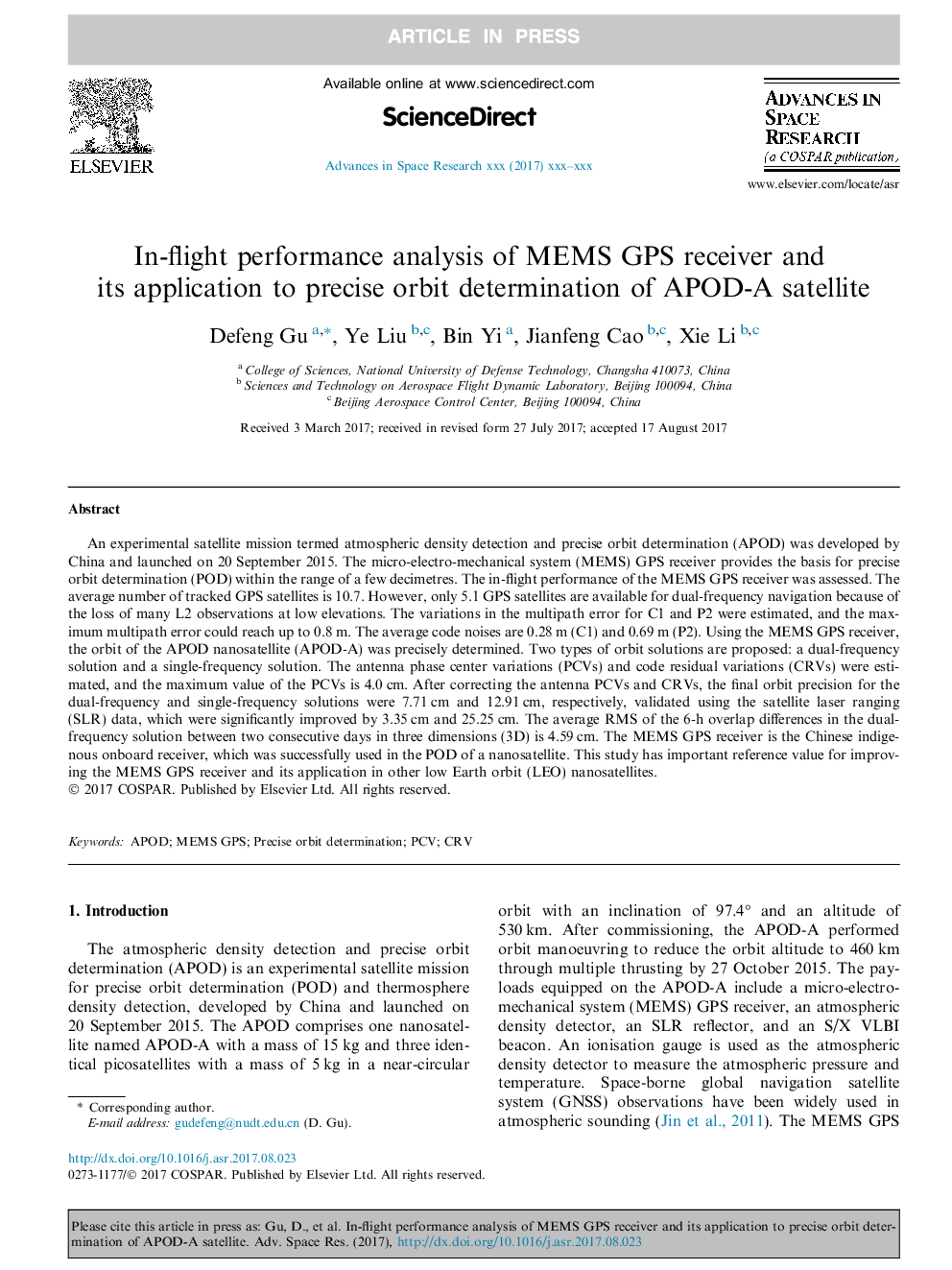| کد مقاله | کد نشریه | سال انتشار | مقاله انگلیسی | نسخه تمام متن |
|---|---|---|---|---|
| 8132535 | 1523279 | 2017 | 10 صفحه PDF | دانلود رایگان |
عنوان انگلیسی مقاله ISI
In-flight performance analysis of MEMS GPS receiver and its application to precise orbit determination of APOD-A satellite
دانلود مقاله + سفارش ترجمه
دانلود مقاله ISI انگلیسی
رایگان برای ایرانیان
کلمات کلیدی
موضوعات مرتبط
مهندسی و علوم پایه
علوم زمین و سیارات
علوم فضا و نجوم
پیش نمایش صفحه اول مقاله

چکیده انگلیسی
An experimental satellite mission termed atmospheric density detection and precise orbit determination (APOD) was developed by China and launched on 20 September 2015. The micro-electro-mechanical system (MEMS) GPS receiver provides the basis for precise orbit determination (POD) within the range of a few decimetres. The in-flight performance of the MEMS GPS receiver was assessed. The average number of tracked GPS satellites is 10.7. However, only 5.1Â GPS satellites are available for dual-frequency navigation because of the loss of many L2 observations at low elevations. The variations in the multipath error for C1 and P2 were estimated, and the maximum multipath error could reach up to 0.8Â m. The average code noises are 0.28Â m (C1) and 0.69Â m (P2). Using the MEMS GPS receiver, the orbit of the APOD nanosatellite (APOD-A) was precisely determined. Two types of orbit solutions are proposed: a dual-frequency solution and a single-frequency solution. The antenna phase center variations (PCVs) and code residual variations (CRVs) were estimated, and the maximum value of the PCVs is 4.0Â cm. After correcting the antenna PCVs and CRVs, the final orbit precision for the dual-frequency and single-frequency solutions were 7.71Â cm and 12.91Â cm, respectively, validated using the satellite laser ranging (SLR) data, which were significantly improved by 3.35Â cm and 25.25Â cm. The average RMS of the 6-h overlap differences in the dual-frequency solution between two consecutive days in three dimensions (3D) is 4.59Â cm. The MEMS GPS receiver is the Chinese indigenous onboard receiver, which was successfully used in the POD of a nanosatellite. This study has important reference value for improving the MEMS GPS receiver and its application in other low Earth orbit (LEO) nanosatellites.
ناشر
Database: Elsevier - ScienceDirect (ساینس دایرکت)
Journal: Advances in Space Research - Volume 60, Issue 12, 15 December 2017, Pages 2723-2732
Journal: Advances in Space Research - Volume 60, Issue 12, 15 December 2017, Pages 2723-2732
نویسندگان
Defeng Gu, Ye Liu, Bin Yi, Jianfeng Cao, Xie Li,